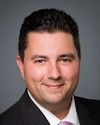Mr. Speaker, the member for Scarborough—Guildwood says it is a lie. It is remarkable that he says it is a lie because there are all kinds of press releases. I would encourage him to read the article so he can see that his colleague from Markham—Unionville was there for the presentation of a $2 million cheque when farmers were evicted from their lands in what is now called the Bob Hunter Memorial Park in this area.
Prime farmland in 2007 was taken out of production with a smile by the same minister who was at the time parliamentary secretary to the minister of municipal affairs and housing, the provincial member of Parliament for Markham—Unionville, the federal member of Parliament for Markham—Unionville, all happy about what was about to happen with the removal of these farmers from their lands, with a $2 million cheque.
The Bob Hunter Memorial Park still is not open to the public. That is the type of park management the Liberals across the way and their friends in the provincial government are supporting. That is what farmers are afraid of, because they know what happens when they entrust their futures to other people. What happens is they suffer, as Mr. Whittamore has said, the death of 1,000 cuts.
The members opposite have talked about ecological integrity. Among the witnesses who appeared at committee, who have actually been managing the resources in that area, was Ian Buchanan of York region. He said that it was impossible, that we could not bring ecological integrity to this park not only because of Highway 401, not only because there was a landfill in the area and the Metro Zoo, but for many other reasons. Mr. Buchanan of York region government talked about the successes and stated:
In addition, I have 15 years of environmental enforcement background at three different levels of government, and what was sadly lacking among all of the framework of legislation in the past was that there was no one window for environmental protection. There were multiple layers and people didn't know who to turn to about what activities were taking place. The one window is a blessing for the Rouge Park.
Larry Noonan, as was referenced by the member for Thornhill, who is with a ratepayer group, supports the legislation that we have brought forward. It recognizes that the goal of environmental integrity is impossible to attain in this area. It also supports the continuation of farming in the area.
Many of the members opposite have referenced Friends of the Rouge Watershed, Ontario Nature and a number of other organizations. A representative of Ontario Nature appeared in committee, Caroline Schultz. We often hear members opposite say not to worry about farming, that it will be protected, that it is all okay. When Ms. Schultz was asked about a corridor, she said that she supported a 600-metre ecological corridor that would take 2,000 acres of class 1 farmland out of production, but said that we should not worry because farmers could still farm.
However, depending on the type of agricultural production that is taking place, she said there were certain types of farming that would not be compatible. Already they are making plans to eliminate farmers from the area.
On the Rouge park management plan, a number of the members opposite have submitted petitions and have talked about their support for organizations like Ontario Nature, the David Suzuki Foundation and Friends of the Rouge Watershed and how important it is.
The member for Scarborough Southwest, when speaking about the Friends of the Rouge Watershed, said, “Nothing will ever be accomplished in Rouge Park without buy-in from the Friends of the Rouge Watershed.” Who disagrees with that? The 700 farmers who actually farm in the area, and the ratepayers who actually lives in the area. The Cedar Grove ratepayers association disagrees with it. People who actually live, work, invest or play in the Rouge disagree with everything the opposition has said with respect to the Rouge and preservation.
Why are farmers so worried about what the environmental groups have put forward? It is because in the Rouge park management plan, this is a section they support. This is from the plan:
Part of protecting cultural heritage values in the park involves the continuation of active farming. Since all activities must dwell within the framework of park goal and objectives, with the highest priority being the protection and restoration of the park's natural heritage, some reduction of farm land base is recommended to permit natural restoration goals to be met.
These are the people and the policies that the members opposite are telling farmers they have to swallow yet again.
Let us talk about the 600 metre ecological corridor. I thought it was 1,700 acres of class 1 farmland that would be taken out of production. I was wrong. It is actually 2,000 acres of class 1 farmland that would need to be taken out of production to meet what the environmental groups have suggested has to happen in the Rouge Park. Let us take that into consideration.
When asked by Ms. Empringham and Mr. Whittamore what that would mean, Mr. Whittamore said it was “death by a thousand cuts”. Ms. Empringham, on behalf of farmers, suggested that people who believed that did not understand farming. The equipment is bigger and it is more intense than it was before. This would almost certainly lead to fewer people farming in the Rouge Park.
The opposition also talks at length about Mr. Robb. Why do farmers fear Jim Robb? Why do they fear the environmental groups that have signed onto this? What has Mr. Robb called our farmers?
He called our farmers industrial cash cropping farmers who planted products that harmed the environment. This was at a committee in front the city of Markham. He went on to say that he was willing to share the Rouge Park with the heritage farm community.
When we had Mr. Robb in front of our committee and asked him to describe what a heritage farmer was, he suggested that a heritage farmer was somebody who was there when the lands were expropriated.
What he was saying in front of the city of Markham was that he would share the park with the heritage farmers, but the farmers who were farming class 1 farmland in the area who did not own the land when it was seized from them did not have a right to be on that land producing.
He was on a committee with a gentleman by the name of Reesor. The Reesor family is one of the original families that actually settled that area. Mr. Reesor actually started farming in that area in 1985. He would not be considered a heritage farmer. He would be evicted, presumably, under Mr. Robb's definition, which is supported by the opposition, from those lands that he has been farming since 1985 and that his family has been farming for over 200 years.
We heard from witnesses. I have met with a number of farm groups. I met with countless constituents of mine. They all say the same thing; that we have to protect the farmers in the northern part of the Rouge.
At the same time, we have to do our best to protect the southern part of the Rouge, which is in the hands of the provincial government. At first, all the provincial government wanted was a hundred million bucks. It said, “Give us $100 million and we'll turn our backs on the Rouge. You can do whatever you want with it, just give us that $100 million.”
Alan Wells, former chair of the Rouge Park Alliance, said that had never been done before. When we called them on it, they then changed their mind and said, “Okay, maybe $100 million is asking too much.” Part of that deal was also saying that ecological integrity was important to them. However, no, it was “Give us $100 million. We'll turn our backs. Congratulations. Move forward with your park.”
We said no; that was not our priority. Our priority was to amass these lands on behalf of all Canadians and to create something special in the Rouge. That is what we are moving forward with.
Let us look at what has happened. People have been calling upon the federal government to take leadership in the Rouge for decades, and we came forward with that protection. We came forward with a plan that engaged Parks Canada.
I have not ever heard anyone in this House who would suggest that Parks Canada is not among the most professional organizations and one of the best stewards of our parkland. In fact, it is world renowned for what it has done in creating national parks and in protecting our natural heritage around this country.
Parks Canada sat down with farmers and actually changed the relationship that government had with its farmers in the area. It changed that relationship to make it more co-operative. They worked together and got the buy-in of farmers to participate in the Rouge national park.
The federal government then set aside over $140 million to create this park, to make it a reality, so that millions of people in the GTA could have access to a national park. We incorporated visitor centres so that people could understand what is important about the area. We established a farming centre to the north of the Rouge Park, so people could understand the 400-year tradition of farming in the area. To the south, there are going to be trails so people can enjoy the Rouge park. They will be able to enjoy their visitor experience. There was going to be upgrading to the environment, upgrading that the provincial government has never done.
The provincial government has put forward a set of circumstances to transfer lands, and it wants us to do what it has never done. By the way, that does not include its infrastructure demands. The provincial Liberal government said, “You need ecological integrity, but, just a second, we need a whole swath of that exempted because we might have future infrastructure demands over the area. You can forget about that portion, but for everything else you should have ecological integrity.”
Forget the fact that the provincial government has never done it. Forget the fact that this legislation would increase the protection of the environment to the highest level it has ever had in this area. Forget the fact that the people who live, work, and play in this area, and have done so for decades, do not agree with what the provincial government is doing. They agree with the approach we are taking, and actually appeared before committee to support this government, to support the Parks Canada initiatives. We are supposed to throw all of that out and pay attention to groups that have no vested interest in the park unless they are getting paid. That is the reality here, and to suggest anything else is wrong.
When they talk about the amendments they brought forward, page after page of amendments, what are the vast majority of these amendments about? They are about ecological integrity. Did we vote against them? Darned right, we voted against them. To vote in favour of them would mean we would be evicting farmers. We cannot have it both ways.
To sum up, to those who suggest that they cannot support this bill, look at it this way. If the provincial government said that it is not transferring its lands, what would we be doing? We would be creating a 5,000-acre park. What are we doing there? We are taking 5,000 acres of class 1 farmland out of a proposed international airport. We are setting it aside for farmers and preserving it so that they can farm forever.
By voting against this, the opposition would not be voting against a greater Rouge park; they would be voting in favour of holding this land for an international airport. They can separate the two issues. If they support farmers and they support the environment, then they will support this bill, at the very least because it would take 5,000 acres of federal land out of a potential international airport and preserve and protect it forever.
At the very least they can support that, and we could all work on the framework and final management plan that would support all of the goals of farmers and environmentalists.





